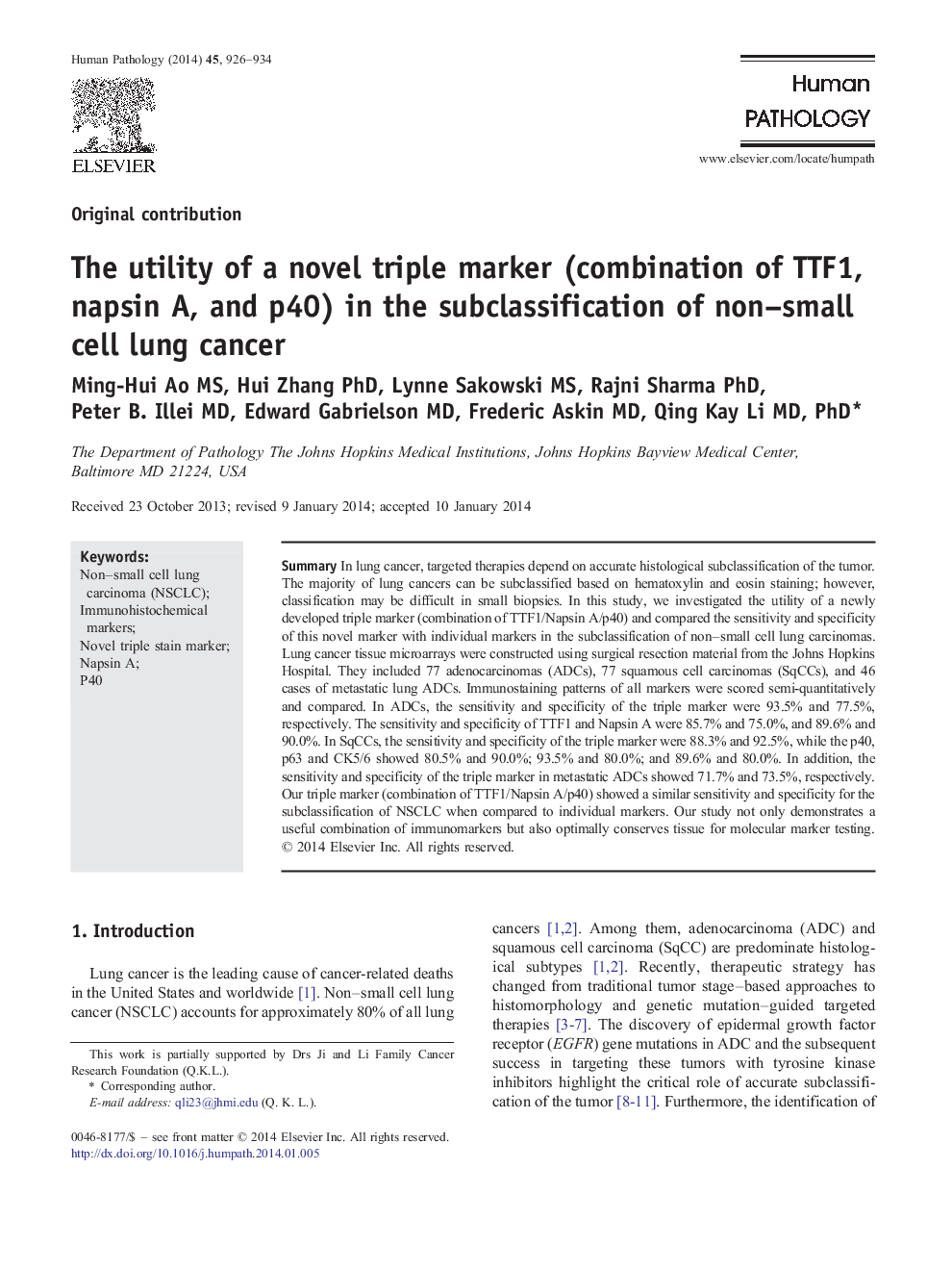| Article ID | Journal | Published Year | Pages | File Type |
|---|---|---|---|---|
| 6216088 | Human Pathology | 2014 | 9 Pages |
SummaryIn lung cancer, targeted therapies depend on accurate histological subclassification of the tumor. The majority of lung cancers can be subclassified based on hematoxylin and eosin staining; however, classification may be difficult in small biopsies. In this study, we investigated the utility of a newly developed triple marker (combination of TTF1/Napsin A/p40) and compared the sensitivity and specificity of this novel marker with individual markers in the subclassification of non-small cell lung carcinomas. Lung cancer tissue microarrays were constructed using surgical resection material from the Johns Hopkins Hospital. They included 77 adenocarcinomas (ADCs), 77 squamous cell carcinomas (SqCCs), and 46 cases of metastatic lung ADCs. Immunostaining patterns of all markers were scored semi-quantitatively and compared. In ADCs, the sensitivity and specificity of the triple marker were 93.5% and 77.5%, respectively. The sensitivity and specificity of TTF1 and Napsin A were 85.7% and 75.0%, and 89.6% and 90.0%. In SqCCs, the sensitivity and specificity of the triple marker were 88.3% and 92.5%, while the p40, p63 and CK5/6 showed 80.5% and 90.0%; 93.5% and 80.0%; and 89.6% and 80.0%. In addition, the sensitivity and specificity of the triple marker in metastatic ADCs showed 71.7% and 73.5%, respectively. Our triple marker (combination of TTF1/Napsin A/p40) showed a similar sensitivity and specificity for the subclassification of NSCLC when compared to individual markers. Our study not only demonstrates a useful combination of immunomarkers but also optimally conserves tissue for molecular marker testing.
